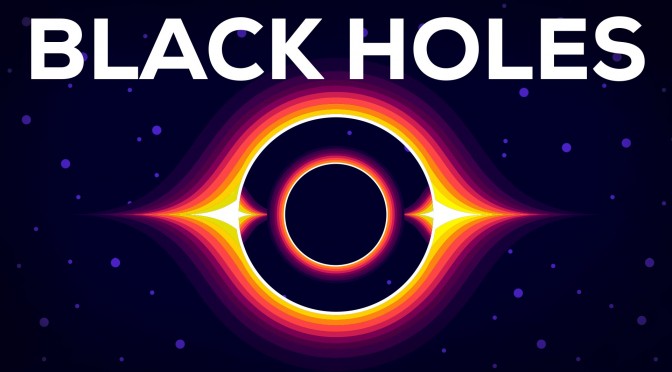What are black holes? What is going to happen if you fall into one? Of course there are many other questions about black holes, and the following animation is an easy way to get most of your questions answered, in under 6 minutes!
Black Holes: Gravity’s Relentless Pull
A black hole is an extraordinary cosmic phenomenon born from the remnants of a massive star that has exhausted its nuclear fuel. As the core collapses under the force of its own gravity, an incredibly dense, compact object is formed. This gravitational pull becomes so strong that not even light can escape its clutches, rendering the black hole invisible to the naked eye. However, black holes can still be detected by observing their effect on nearby matter, such as the bending of light or the acceleration of nearby stars and gas.
The Anatomy of a Black Hole
At the heart of a black hole lies the singularity, an infinitely dense point in space where the known laws of physics break down. Surrounding the singularity is the event horizon, a boundary beyond which nothing can escape the black hole’s gravitational pull. This invisible sphere acts as a point of no return, marking the threshold between the known universe and the enigmatic interior of the black hole. The event horizon’s size is determined by the black hole’s mass—the more massive the black hole, the larger the event horizon.
Black Hole Paradoxes and Mysteries
Black holes present numerous conundrums and enigmas for physicists, challenging our understanding of space and time. One such puzzle is the information paradox, which arises from the principle that information cannot be destroyed. However, when an object is swallowed by a black hole, it appears that its information is irretrievably lost. This paradox has led scientists to consider various theories, such as the holographic principle, to reconcile black holes with the conservation of information.
Animation source: Kurzgesagt – In a Nutshell

